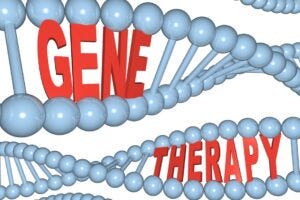November 9, 2022

Wuhan Neurophth has announced a $140 million agreement to use Cyagen’s AI platform to discover novel AAV vectors.
Cyagen is a Santa Clara, California gene therapy contract research organization (CRO) with offices in China and Japan that offers genetically modified rodent models. Neurophth is developing gene therapies for ophthalmology indications. The company’s lead drug recently started a Phase III trial for ND4-mediated Leber’s hereditary optic neuropathy (ND4-LHON) with plans to conduct trials of the drug in China and the US.
According to Cyagen, its AI and single-cell RNA-sequencing technologies aim to overcome the present limitations of gene therapy R&D by quickly identifying next-generation AAV capsids with enhanced tissue targeting capability, tissue specificity and productivity.

Image: DepositPhotos/iqoncept
Cyagen and Neurophth will both be responsible for evaluating the functional properties of the novel AAV vectors in rodent and NHP models. Neurophth will conduct clinical trials and be responsible for commercialization. Cyagen could receive milestone payments and sales royalties that top $140 million.
“Gene therapy has demonstrated great promise and potential for treating genetic ophthalmic diseases, and the ophthalmic gene therapy market has expanded exponentially in the past few years,” Lance Han, president of Cyagen, said. “Together with Neurophth, we will develop the world’s best AAV ophthalmic gene therapy products and bring brightness back to patients all over the world.”
“Neurophth hopes to seek like-minded partners to work together to achieve breakthroughs in ophthalmic gene therapy development, and I think Cyagen is our ideal companion on the road ahead,” said Bin Li, Founder, Chairman and CEO of Neurophth.
Neurophth uses gene therapy technology for ophthalmic diseases. Its ND4-mediated Leber’s hereditary optic neuropathy therapy has been granted Orphan Drug Designation in the US and EU. It is the first novel China gene therapy drug granted IND approval in China and the US. Neurophth’s pipeline also includes ND1-mediated LHON, autosomal dominant optic atrophy, optic nerve protection, vascular retinopathy, and other preclinical candidates.
Previously, Neurophth has partnered with other companies with gene therapy technologies including Hopstem (for stem cells) and AAVnerGene for capsids.
This article was first published in ChinaBio Today on November 7, 2022
About the Author
You May Also Like




